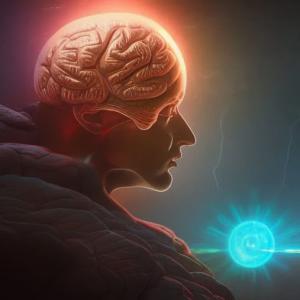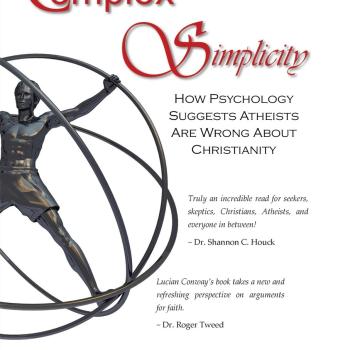
The Brain Damage
You have no doubt heard it said that we still have much to learn about the human brain. The fact is that we know a great deal – enough, in fact, to know what we don’t know.
The brain is a difficult organ to study, largely because it is not the sort of thing one can open up and watch as it is working. A variety of brain imaging techniques have expanded on our knowledge of the brain in recent years, but it is still similar to studying the inner workings of a computer through videos and photographs.
The biggest advances in brain science in the past 100 years have been made, perhaps surprisingly, through the study of brain damage victims. When a person’s brain is damaged in a particular area, and the person’s behaviors, thought processes, and perceptions change after the damage, neurologists are able to say with some certainty what the damaged area of the brain did.
It would be unethical, to say the least, for scientists to intentionally damage a person’s brain in order to investigate its workings, however neuroscientists have the next best thing: transcranial magnetic stimulation (TMS for short).
Using this technique, scientists may temporarily disrupt the functioning of the specific area of the brain to which the TMS is applied. The changes in a person’s behavior may be observed, and further insight is given into what that part of the brain did for them.
The Hype
In 2015, religious and atheist forums exploded with news of an experiment performed out at the University of California. Social media feeds were splashed with headlines like “Directing Magnetic Energy Into The Brian Can Reduce Belief In God,” “Scientists reduce belief in God by shutting down the brain’s medial frontal cortex,” and the far more on-the-nose “Scientists Claim Zapping Brains with Magnets Can Treat Belief in God”.
Was it true? Had science somehow come up with a “cure against religion,” as some commentators suggested?
The Experiment
The posterior medial frontal cortex (PmFC) is an area of the brain which, among other things, notices when things aren’t right, and then begins problem solving. Imagine, for instance, that you see something scurrying across the floor out of the corner of your eye. It is your home, and things shouldn’t be scurrying around it. Your PmFC kicks in, and you start to explore your options. Spider? Mouse? Gremlin? As the options come up, your problem solving kicks in. Stomp on it? Run away? Grab a can of RAID?
Or you sit at your table, and your hand contacts something squishy and sticky. The PmFC goes to work, and you start wiping your hands on your pants as you get up to find paper towels and cleanser.
In this experiment, the researchers decided to investigate how the PmFC affected human behavior in relationship to two things: immigration and religion.
The scientists got to work recruiting participants. They were all graduate students, because grad students are the easiest subjects for colleges to find for experiments, and they were all paid to participate.
The college got a good read on their political and religious ideas by using screening questions. They aimed for mostly white, American, conservatives. After getting their crew in the lab, they separated them into two groups: the group that got the treatment and the group that got a fake light-show. Neither group had a firm idea of what was going on.
Since the subject of this column is conversion and deconversion, we won’t trouble ourselves with the details about the immigration experiment. Our real question is, did science actually find a way to “zap the brain with magnets” and “treat belief in God”?
After the treatment or light show, respectively, the subjects were then given a little quiz. They were “primed” with thoughts of death – meaning the experimenters got them thinking about death. How did they do this? By simply asking the people to write briefly on their own death.
Now that the subjects had death on the mind, they were given a test on religious conviction. The subjects were asked to rate convictions and beliefs about God, angels, the afterlife, the soul, and traditional religious ideas. These took the form of a so-called “Likert Scale” which asks the person to rate on a scale from 1 to 10 how certain they are that:
- There exists an all-powerful, all-knowing, loving God.
- There exists an evil personal spiritual being, whom we might call the Devil.
- There exist good personal spiritual beings, whom we might call angels.
- There exist evil, personal spiritual beings, whom we might call demons.
- Human beings have immaterial, immortal souls.
- Some people will go to Heaven when they die.
- Some people will go to Hell when they die.
- Miracles—divinely-caused events that have no natural explanation—can and do
happen.
…among others
The experimenters expected that people who had death on the mind, would be far more likely to grasp at their God-beliefs than those people who didn’t.
As expected, the people who got the light-show instead of the treatment were far more committed to their religious views – eagerly checking the “10” box on the one-to-ten scale. The other group, the people whose brain had been temporarily affected, were giving answers on the lower end of the scale.
So what happened in this experiment?
Imagine you are in your home and you don’t see the thing scurrying across the floor or put your hands in a mess. Do you reach for the RAID or the paper towels? Blind to the fear of death, the affected group didn’t feel the urgency to grasp at God beliefs.
What Does This Mean?
This does not mean that belief in God can be “cured by magnets,” or any such thing.
In the realm of conversion studies, what we can infer from this study is that religious beliefs are, to some extent, a problem-solving mechanism used to cope with the world around. In much the same way that one tends to pray more frequently when one is confronted with stress or catastrophe, that one reads one’s bible and attends church more frequently when the world around seems wrong.
It might seem like this study would relate to my work in Deconversion, but, in fact, it is much more closely related to conversion studies than deconversion.
The standard stage model of religious conversion begins like this: something is wrong in a person’s life. All of the usual solutions seem to be failures. The person enters a kind of “seeker mode,” in which he or she is open to new ideas to resolve the problem.
It is during this “seeker mode” that the person is most susceptible to religious individuals and ideas.
Much like in our magnet experiment, the problem activates the PmFC, and problem solving commences. Ideas like God, the soul, heaven, and miracles become much more attractive during this period of discomfort.
Where Do We Go from Here?
The Oxford Handbook of Religious Conversion was published a year before this experiment, in 2014. In the chapter on “Neuroscience and Conversion,” the author simply stated that we don’t know much about how the brain plays into religious belief and conversion. A great deal of study has been done since then, and there is a good bit more that science can tell us about conversion and deconversion in terms of how brains change minds. Follow this column for more information on that research.














